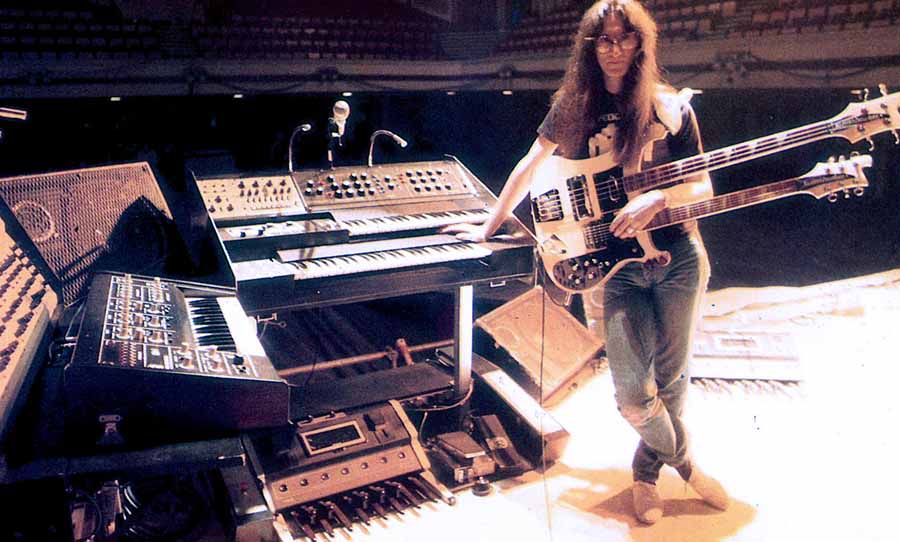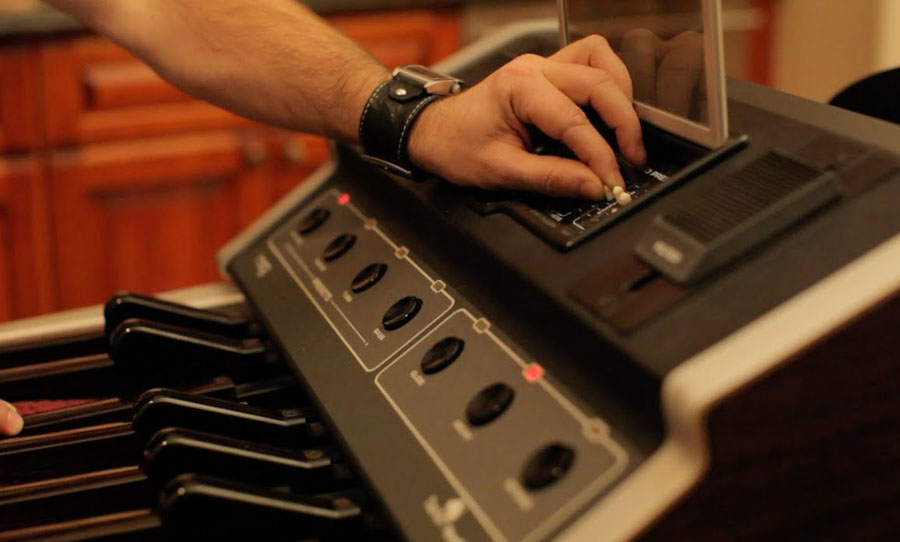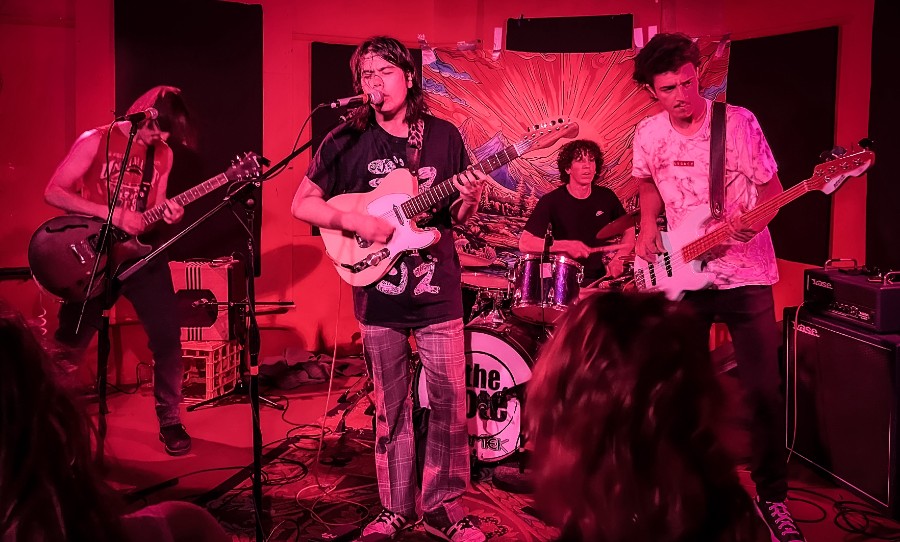In the history of synthesizers, the ’70s was a glorious in between world. There were brilliant instruments, but the industry had yet to reach maturity. Sure, the Minimoog was out, but modular rigs were still the dominant force, bar a few notable exceptions. It was this kind of freewheeling conceptual environment that spawned the Moog Taurus.
Originally conceived to form part of a Constellation set of synthesizers, this floor-based analog bass monster was wholeheartedly embraced by the prog community, forming a monolithic foundation from which to build intricate rhythms and harmonies.
 In some ways traditional, in others completely groundbreaking, the Moog Taurus has been cutting through the mix since its inception in the mid-seventies.
In some ways traditional, in others completely groundbreaking, the Moog Taurus has been cutting through the mix since its inception in the mid-seventies.
It was Written in the Stars
For a music traditionalist, the concept that set the Taurus in train makes perfect sense. Anyone who’s familiar with an organ, like a Hammond for example, will note the pedals located on the floor: this was the principle that underpinned the Taurus. The early ’70s concept for the Constellation comprised of three parts: the Apollo – a polyphonic synth; the Lyra – a monosynth which was slated to have more versatility than the recently released Minimoog and the bedrock to this zany idea – and the hero of this tale – the Taurus.
We know now that the Lyra and the Apollo would be consigned the cutting room floor of history (though one Lyra was notably sold to Keith Emerson). It is understandable too: can you imagine how much this 20th century interpretation of a pipe organ would cost to put together? The Lyra, compared to the Minimoog, never really stood a chance, while the Apollo would eventually morph into the Memorymoog. The Taurus would survive in its original state and enjoy a long life of its own.
Making Progress
The surge of popularity that the Taurus would enjoy was due in no small part to its adoption by the prog rock scene – quickly becoming a favourite among bands like Pink Floyd, Yes, Rush and more. Being a pedal-based instrument, it’s not capable of playing agile bass lines. What it does perfectly is underpin harmonic movements with notes and drones with a power far beyond the reach of a bass guitar. Note how the Taurus has the power to cut through the complex rhythmic and harmonic mix of strings, guitar and organ in Genesis’ Can-Utility and the Coastliners.
And how exactly did this synth fill out the bottom end so successfully? For one thing, it was simple to use and understand. It came with three preset sounds – bass, tuba and Taurus. There was another patch slot for users to program their own sounds too. Its monophonic sound engine consisted of two oscillators – square and sawtooth waveforms, a 24dB per octave lowpass filter and a VCA section that consisted of attack, decay and sustain.
Functionality came via the foot pedals, arranged in an keyboard octave, like they would be for an organ. You could switch between the five possible octaves with a button and there were also two massive sliders, one for VCA volume and the other for filter cutoff that you could operate with your feet. This last point is worth remembering – the synth may be primitive in terms of sound creation and tweakability, but the whole thing is meant to be operated with your feet, while playing other instruments.
 Take II
Take II
At the dawn of the ’80s, the Taurus II hit the market and left everyone, well, a bit confused. In some ways, it was functionally deeper than version I, but for some reason, Moog decided to make the controls smaller, which made for an uncomfortable playing experience if you weren’t particularly dexterous with your feet. It used the same synth engine as the Rogue, which is regarded as one of Moog’s most basic, cheap and generally uninspired offerings to date.
Perhaps this was a point in time when Moog felt the pressure to cut costs most keenly – there was a new wave of brilliant and competitively priced options from the across the Pacific to contend with after. After a short run in production, the Taurus project was officially spiked in 1983
.
Sound of the Future
The Taurus didn’t surface again until 2010 with the release of version III. Sensibly, the team at Moog bypassed the short-lived Taurus II and went straight to the original for their source of inspiration. There was a few more buttons underfoot, the big sliders gave way to wheels and it also had the capacity for more patch storage. It did stay true to the original in regard to the three classic set patches and was still based on one waveform source.
The same problems of bulk and price that put the original out of reach of most musicians assailed the limited run of Taurus III. To meet the popular demand of this brand of particularly massive bass, Moog brought about the Minitaur MIDI enabled synth module. Small enough to fit on any desktop and reasonably priced, this mini monster encapsulated all the virtues of the Taurus line and put them, literally, at your fingertips.
They even took the Taurus architecture and applied it to a limited edition lead synth. The recently released Sirin melted hearts with it colourful design and was based on the proportions of a Minitaur. The dual-oscillator synth is capable of scaling the octaves all the way to D8 (beyond the top notes of a piano) and still deliver the bone crushing lows of its bass-heavy ancestors.
The Taurus line is one of the more unlikely success stories of the synth. It’s initial purpose – to be incorporated into an outlandish ensemble of synthesizers never took hold. Yet this was for the best, as it took on a life of its own, especially after being exploited so masterfully by prog rock players. After a lengthy hiatus, the demand for its awesome bass power reached a critical mass, and the Taurus was reborn. With the Minitaur, its clever design and accessibility seems to have ensured its survival.
The Taurus’ and now, the Minitaur’s blend of simplicity and unrivalled power in creating bottom end energy will no doubt keep musicians coming back for more.


